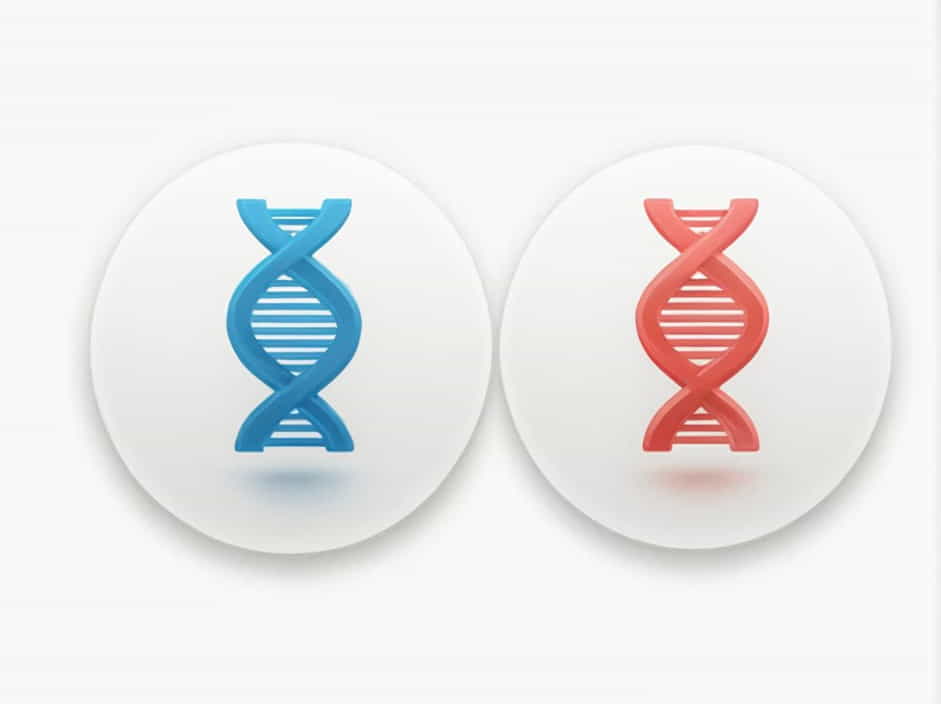DNA and RNA are two essential molecules that carry genetic information in living organisms. While both are nucleic acids and play crucial roles in heredity and protein synthesis, they have distinct structures and functions.
Understanding the differences between DNA and RNA helps in various fields, including genetics, medicine, and biotechnology. This topic explores their unique features, functions, and importance in biological systems.
What Is DNA?
Definition of DNA
DNA (Deoxyribonucleic Acid) is a double-stranded molecule that stores genetic information. It acts as a blueprint for building and maintaining an organism.
Structure of DNA
- Double helix shape – Resembles a twisted ladder.
- Sugar – Contains deoxyribose, which lacks one oxygen atom.
- Bases – Made up of four nitrogenous bases:
- Adenine (A)
- Thymine (T)
- Cytosine (C)
- Guanine (G)
- Base pairing – A pairs with T, and C pairs with G.
Function of DNA
- Stores genetic instructions for growth, development, and reproduction.
- Transmits hereditary traits from parents to offspring.
- Controls protein synthesis by directing RNA production.
What Is RNA?
Definition of RNA
RNA (Ribonucleic Acid) is a single-stranded molecule involved in protein synthesis and gene expression.
Structure of RNA
- Single-stranded – Does not form a double helix.
- Sugar – Contains ribose, which has one more oxygen atom than deoxyribose.
- Bases – Uses:
- Adenine (A)
- Uracil (U) (instead of Thymine)
- Cytosine (C)
- Guanine (G)
- Base pairing – A pairs with U, and C pairs with G.
Function of RNA
- Transfers genetic information from DNA to ribosomes.
- Helps in protein synthesis by assembling amino acids.
- Regulates gene expression and cell functions.
Key Differences Between DNA and RNA
| Feature | DNA | RNA |
|---|---|---|
| Structure | Double-stranded | Single-stranded |
| Sugar | Deoxyribose | Ribose |
| Bases | A, T, C, G | A, U, C, G |
| Function | Stores genetic information | Helps in protein synthesis |
| Location | Mostly in the nucleus | Found in the nucleus and cytoplasm |
| Stability | More stable, long-lasting | Less stable, short-lived |
Types of RNA and Their Roles
RNA is not a single type of molecule but exists in different forms, each with a specific role in protein synthesis:
1. Messenger RNA (mRNA)
- Carries genetic instructions from DNA to ribosomes.
- Acts as a template for protein synthesis.
2. Ribosomal RNA (rRNA)
- A major component of ribosomes, the site of protein production.
- Helps assemble amino acids into proteins.
3. Transfer RNA (tRNA)
- Delivers amino acids to ribosomes.
- Helps decode mRNA sequences into proteins.
Why Are DNA and RNA Important?
1. Genetic Inheritance
- DNA ensures that traits are passed from one generation to another.
- RNA helps translate genetic codes into functional proteins.
2. Protein Synthesis
- RNA plays a direct role in assembling proteins, essential for body functions.
3. Medical and Scientific Research
- DNA analysis is used in forensics, ancestry testing, and disease research.
- RNA-based vaccines (like mRNA COVID-19 vaccines) have revolutionized medicine.
DNA and RNA are both fundamental to life, but they serve different purposes. DNA acts as the permanent genetic storage, while RNA is the messenger that helps build proteins. Understanding these differences is crucial for fields like genetics, medicine, and biotechnology.
